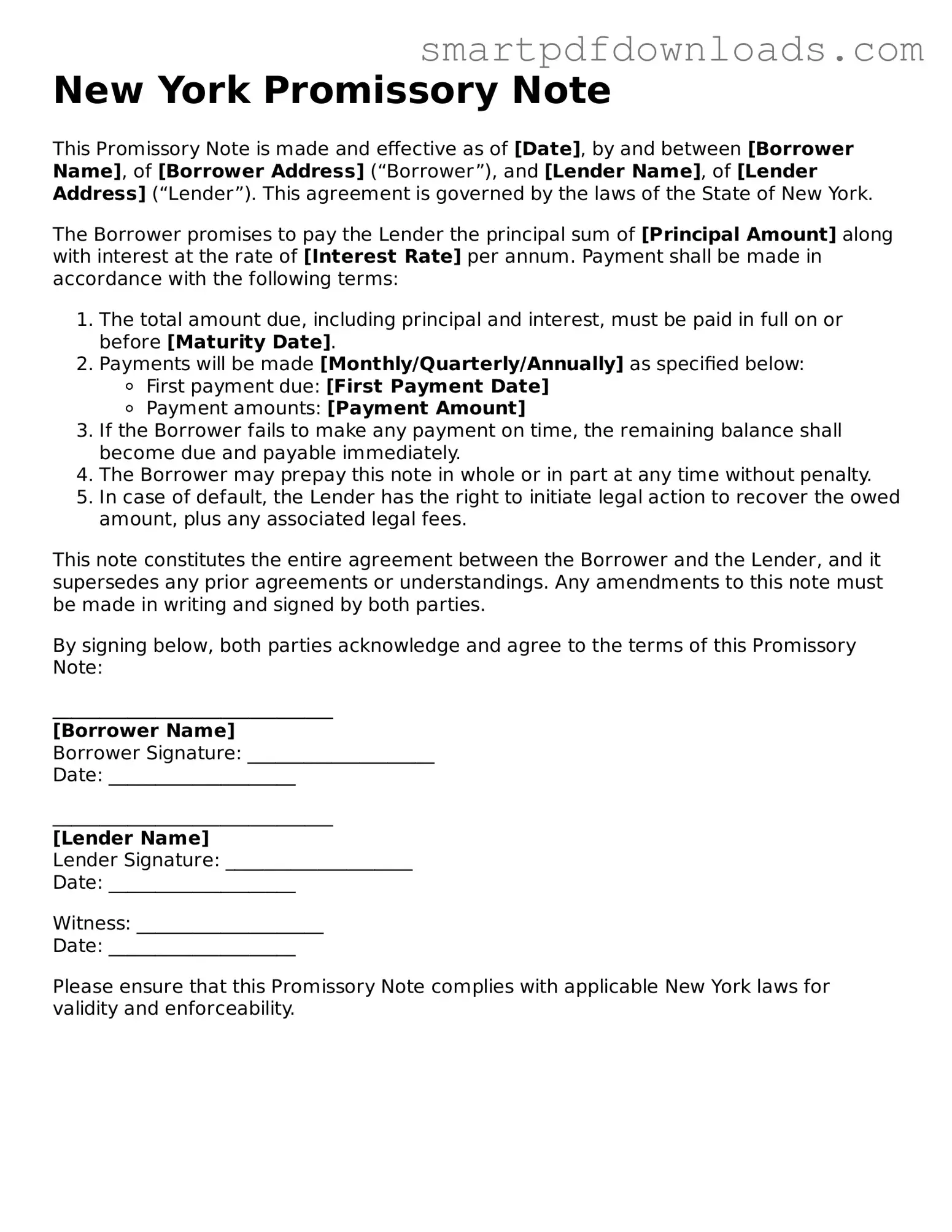New York Promissory Note
This Promissory Note is made and effective as of [Date], by and between [Borrower Name], of [Borrower Address] (“Borrower”), and [Lender Name], of [Lender Address] (“Lender”). This agreement is governed by the laws of the State of New York.
The Borrower promises to pay the Lender the principal sum of [Principal Amount] along with interest at the rate of [Interest Rate] per annum. Payment shall be made in accordance with the following terms:
- The total amount due, including principal and interest, must be paid in full on or before [Maturity Date].
- Payments will be made [Monthly/Quarterly/Annually] as specified below:
- First payment due: [First Payment Date]
- Payment amounts: [Payment Amount]
- If the Borrower fails to make any payment on time, the remaining balance shall become due and payable immediately.
- The Borrower may prepay this note in whole or in part at any time without penalty.
- In case of default, the Lender has the right to initiate legal action to recover the owed amount, plus any associated legal fees.
This note constitutes the entire agreement between the Borrower and the Lender, and it supersedes any prior agreements or understandings. Any amendments to this note must be made in writing and signed by both parties.
By signing below, both parties acknowledge and agree to the terms of this Promissory Note:
______________________________
[Borrower Name]
Borrower Signature: ____________________
Date: ____________________
______________________________
[Lender Name]
Lender Signature: ____________________
Date: ____________________
Witness: ____________________
Date: ____________________
Please ensure that this Promissory Note complies with applicable New York laws for validity and enforceability.
